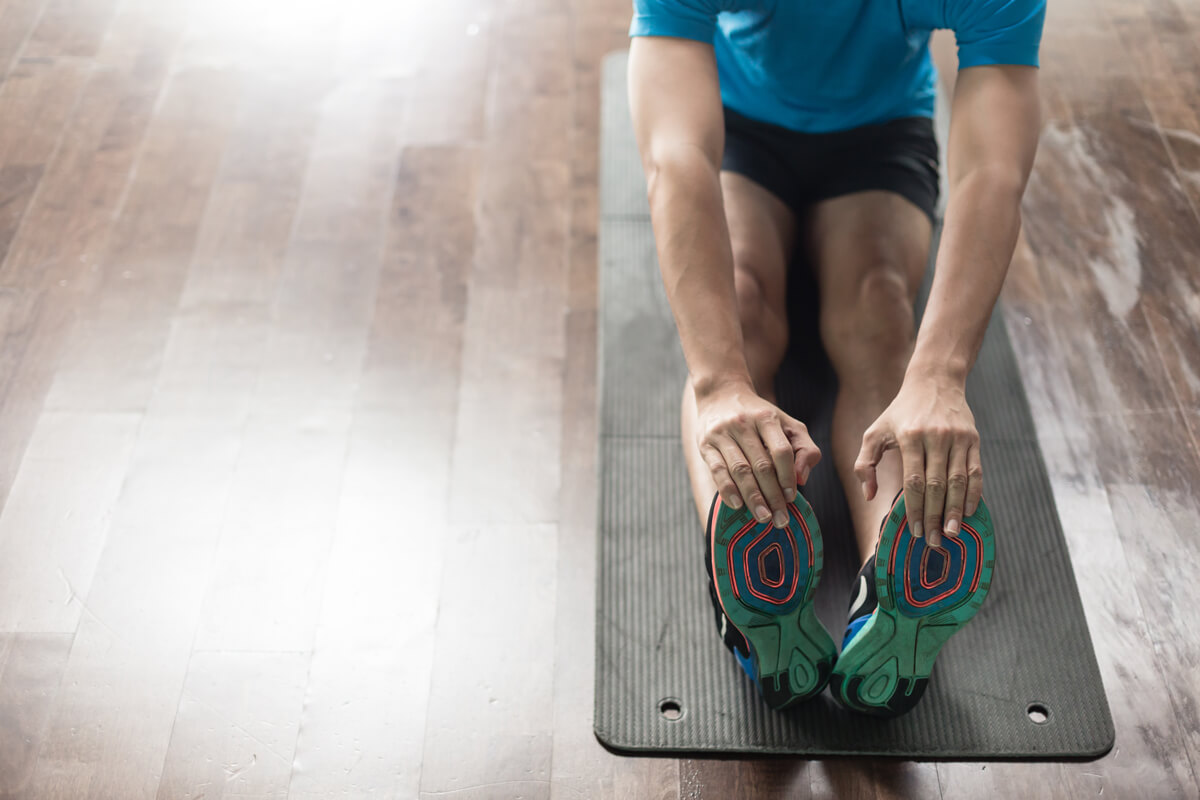There was a lot of controversy about stretching. When should you stretch? Statically or dynamically? How long?
When you ask these questions to a personal trainer, physiotherapist or doctor, you will probably get a lot of different answers. Some say stretching is one of the best ways to warm up, while others think it should be done after training.
In the article, I will discuss and cite knowledge supported by scientific research and provide practical advice on how to incorporate stretching into your training program in order to obtain the best results from it.
What is stretching?

Stretching the muscles increases the range of motion by reducing the stiffness of the tissue. The element of stretching the muscle should take place slowly, considering adequate breathing, as well as tissue tightness. It cannot be painful! We should carefully plan what and why we want to stretch.
On average, 3-4 stretching sessions per week should be performed. More does not mean better, because the tendons and muscles must have time to regenerate. Each of us is different and performs trainings with individual frequency, which should also be considered.
There are many types of stretching, but we will focus on the two most popular:
• static,
• dynamic.
The main rules of stretching
First, we must remember that each of us is different, so we cannot say unequivocally that stretching is completely unnecessary, or the way we propose will be the best for everyone. It is influenced by many factors, such as anatomy, habits of everyday life, regeneration or type of physical activity. Some sport disciplines require mobility in all the smallest joints, and some are based only on full ranges of movements.
Stretching should not be done by everyone in the same way and with the same pattern. The starting point should be a proper functional and postural assessment of the figure, based on which an individualized action program is adjusted. Appropriate mobility and flexibility are extremely important elements of everyday functioning. These are not important issues only for athletes, but also apply to people who spend many hours in a sitting position, standing or other, forcing long-lasting tension of the same muscle groups. Every day, we should devote a few minutes minimum to take care of these aspects.
Each physical activity should be preceded by proper warm-up and dynamic stretching. Thanks to this, we will obtain larger ranges of motion. It is a good idea to introduce dynamic stretching before training, because it uses the active movement of the body parts in terms of its mobility. It consists in gradually increasing the range and / or speed of movement in order to reach the maximum level. It is best to adapt the stretching exercises to the workout in order to mimic the exercise movements that will be performed during the basic training. Remember to avoid jerky movements. Dynamic exercises should be performed respectively in series of 8-12 repetitions. We should not feel fatigue during stretching, because muscles may lose flexibility, because we can reduce the length of the muscles, regulated by the nervous system.
Stretching before training
Many scientists believe that performing static stretching before training or sports competitions can reduce the risk of injury. This is one of the reasons why this type of stretching was so popular over 20 years ago. However, more and more studies have recently appeared that refute the issue, proving that this may lead to a reduction in strength, power and speed - thus limiting the athlete's abilities. Of course, as always, the truth lies somewhere in between.
Static stretching involves taking a position in which the muscle is stretched and remaining in it for several seconds. The negative effect of static stretching will be reduced by using dynamic movements and the start of the training unit. However, we should not stretch statically between series, especially in complex movements. An important aspect is the time spent on stretching. Short-lasting, or less than 30 seconds, has no detrimental effect on muscle performance, while improving mobility. As long as the stretching does not last longer than 45 seconds, we should not worry about the loss of strength or power.

It is also worth considering the current mobility of the exerciser. Large mobility constraints make it difficult to maintain a good exercise technique, so stretching over a longer period to obtain better technical positions may outweigh the drop-in performance during the training session. It is also a good idea to plan static stretching as a separate training unit.
Stretching after training
Stretching immediately after training should be a relaxing element - it cannot cause pain or discomfort. In this way, static stretching applied will have a positive effect on regeneration.

Do not spend the next hour stretching after a workout, then it is better to plan it for a separate training unit. During training, muscle fibers are shortened, and micro-injuries occur. The muscles lose their elasticity, so too long static stretching, can generate undesirable irritation and tearing of tendon attachments, which can contribute to the injury.




